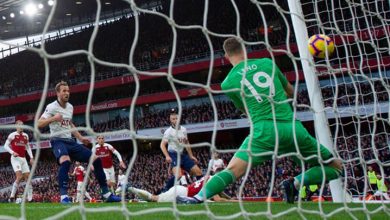Top or Bottom Hand for Top Corner Saves?

The top corner save, the perfect opportunity for the keeper to get that camera save. Possibly the hardest shot to stop, but the most rewarding to pull off.
We know that for any keeper, getting both hands to the ball where possible is a winning formula, but what about those stretching saves into the outer regions of the goal? Which hand comes out on top when protecting the most vulnerable part of the goal?
Well the answer may not be so straight forward. This particular save technique has caused debate between coaches, with some suggesting keepers to use their most dominant hand, others to always use their top hand, and some encouraging the use of the bottom hand.
Even at the top level, there is a mix of styles and opinions on which hand to use; as below you can see that De Gea and Casillas have completely different styles of making those top corner saves.
There are advantages and disadvantages to using either hand, seen simply by looking at the save from a physiological standpoint.
By just viewing images of saves using the bottom hand, you can see that the goalkeeper must twist their upper body upright in order to get their hand to the ball. This is because the body forms a barrier between the bottom hand and the top corner you’re so desperate to reach. This is where we see the advantage to using the top hand, as with no such barrier, it is easier to cover the height of the goal in stretching dives.
So why do some coaches suggest keepers use the bottom hand then?
Whilst the top hand is arguably more effective at covering greater heights, the bottom hand can be said to be more effective at covering a greater distance of the goal.
You can see for yourself, just hold your hands in front of you and move both to the right as if making a save. You’ll notice that your right hand, which would effectively be your bottom hand, covers a much greater distance than your left. This is again because of the barrier to the ball the body creates.
So which hand is right for you?
As a player and a coach myself, I’ve found that I prefer to use my top hand. I know keepers who prefer their bottom hand and even some that adopt a ‘hybrid’ approach by using either the top or bottom hand based on the demands of the save.
I find it largely comes down to the keepers’ personal preference as to which they feel more successful or comfortable using.
Why not train using both hands for top corner saves, as this will allow freedom to find what’s right for the keeper, along with putting another technique in the toolbox should it be called upon in a game.






Ah this is a great one! I believe, that in general that – its quicker to go with your bottom/same side hand for top corner saves, but you can generate a huge amount of momentum by driving your top/opposite hand – so that top hand save covers more distance but is a touch slower to generate.
Pros & Cons of Hand used for top corner saves:
Top/Opp. Hand Pros –
– Greater range/height
– More momentum
– Ability to go ‘through’ the ball (physically stronger save)
– Bottom hand available to help break fall
– Easier to drive opposite hand/knee at same time
Top/Opp. Hand Cons –
– Slower to perform
– Top Hand starts further away
Bottom/Same Side Hand Pros –
– Shorter distance to drive hand
– Quicker ‘reaction’ save (great for snap-shots or shots seen late/deflected)
– Can suit more agile/explosive GK’s
Bottom/Same Side Hand Cons –
– Hard to break fall when landing
– Hard to generate momentum in addition to step and hand drive
Thanks for the great comment Steven! Welcome to the site! ?